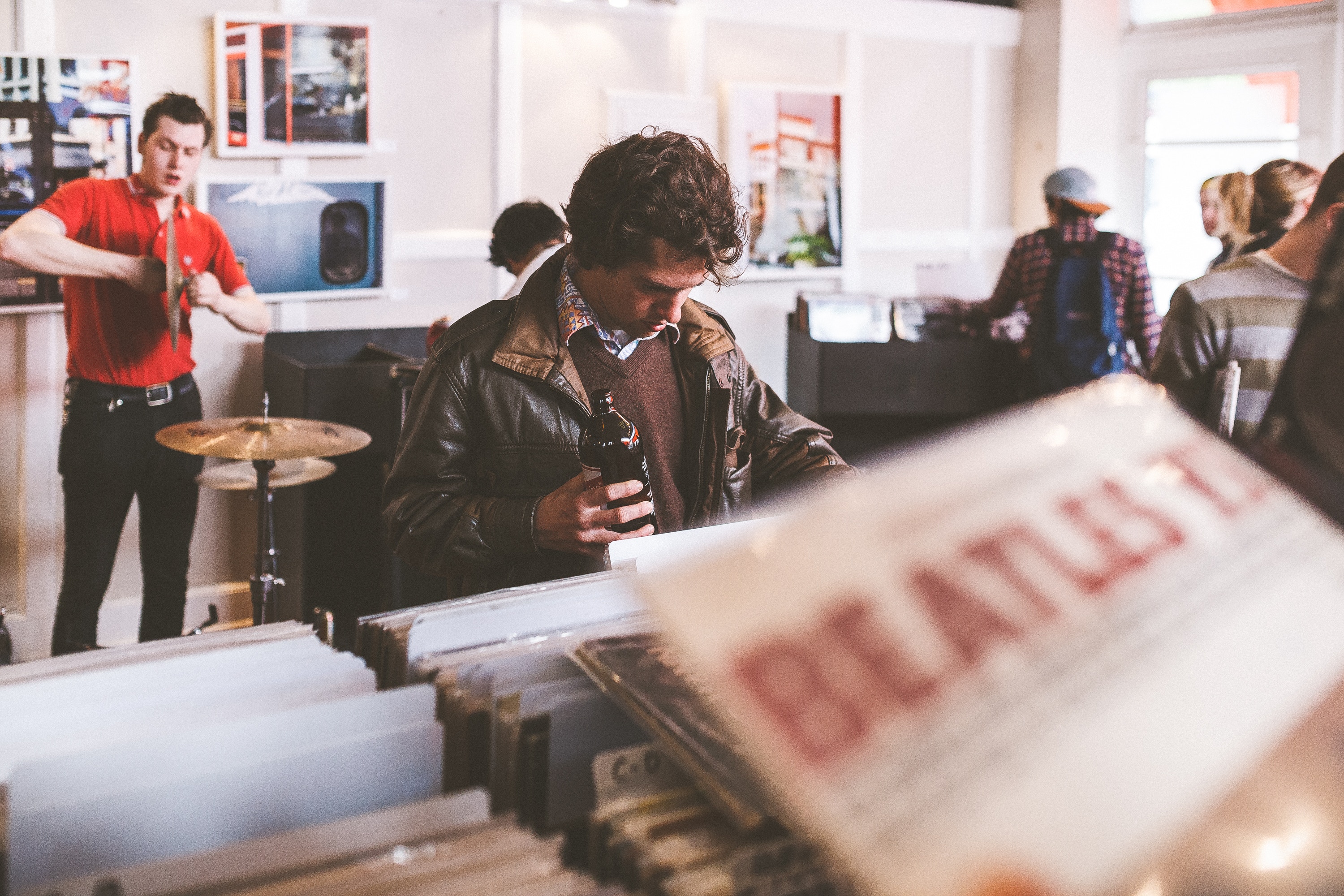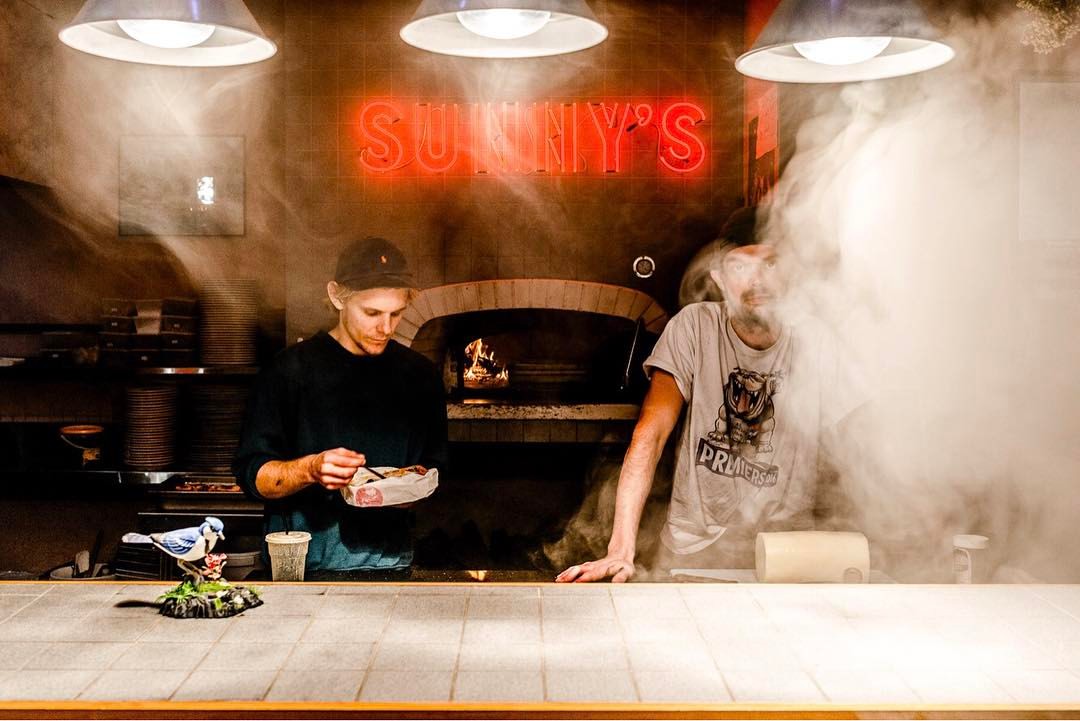LP sales have skyrocketed since the turn of the decade.
Today’s world is wild — technology has us by the scruff of the neck and there’s no room for retro renaissance — or so we thought. True to the volatility of the human mind and the flexibility of the society we live in, some old trains of thought, inventions and customs have commenced their resurrection.
Take a look out your window; vintage stores are trading at unprecedented levels, people still cherish a cut from the barber and contemporaries can’t forsake their old Polaroid cameras. We’re embedded in a world mature beyond its years, yet we can’t escape the precious past. Maybe it’s refreshing, maybe it’s what our muddled minds so desire.
As we comprehend the reawakening of the old school chic, our catalogues of wax stare us blankly in the face. As music thrusts forward, consumers are taking a step back and vinyl is dancing through the fields like Julie Andrews with dandelions at her feet.
The entity of music is adored now more than ever and it’s the infatuation people have with music that’s channelling their own creative ingenuity. An idle CD or stream excites only a small portion of a listener’s imagination — a spinning record, however, goes some way to gratifying a music-invested mind.
It was 1982 when we witnessed the death of vinyl. August 17 came and so did the first-ever CD pressing — you guessed it, ABBA adorned the very first compact disc with their album, The Visitors. At the time, the CD-ROM was like the very first iPhone; new, different and exciting.
Compatible with a number of different players, the new format was more practical than the traditional LP. It was also free of surface noise, heck, you’d just whack it in a CD player and the music would play. Unlike the needle on a record player, there was no risk of wear and tear to the CD while it was playing so it was also perceived as a more durable alternative.
These advantages are dubious today, though they were incredibly convincing in 1982. You have to imagine the starry-eyed expression of a technologically-deprived teenager when she is given her first CD in the ‘80s, all shiny and new.
The glitz of owning and playing a compact disk reached its apex during the ‘90s. Step into Sanity and all your digital needs were there — you could pick up Nirvana, Oasis or Red Hot Chili Peppers with just a dime.
CD sales continued their momentum into the ‘00s which coincided with embarrassing lows for vinyl. Three-quarters of all record stores in the UK closed during this ten-year stint. There was no appetite for owning and playing a 12-inch as the convenience of CDs reigned supreme.
A banana doesn’t stay ripe for long, however, and soon enough listeners began to tire of the simplicity of a CD-ROM. Music admirers yearned for a greater challenge and it was 2007 when tables started to turn.
2007 saw the first upturn of vinyl sales since the ‘80s, but it wasn’t until the second decade that the resurgence gained its stride. From 2010, the vinyl revival wasn’t just a rumour or fable, it was real and suddenly there was a sense of individualism to owning a record.
It was like a well-kept secret that had been leaked, but not yet fully disclosed, and there were certainly punters who would’ve preferred the ballpark to themselves.
But the upsurge was too strong and the mania became widespread. No one could deny the nostalgic charm vinyl held and LPs became collector’s pieces. They were living organisms of a music lover’s imagination and there was a feeling of expertise in owning a record.
Now it’s 2018 and record sales show no signs of slowing down. At the beginning of the revival, releasing music on vinyl was a privilege, now its commonplace and artists are steering the vehicle with greater creativity than ever before.
LPs as an art form have seen the rise of the splatter vinyl and other peculiar arrangements. Take a look at the discography of King Gizzard & the Lizard Wizard, who, at the hands of creative god Jason Galea, have crafted marvellous assortments of their vinyl.
Peer into their 2017 collection, a year where the band released five albums, to gain a sense of their unbridled imagination.
There’s a prized appendage to the LP and that’s the record stores that house them. Institutions which gritted their teeth during the lull have come out the other side with rosy cheeks and new retailers are cropping up everywhere like a bad rash.
On top of their vinyl trade, record stores have become live music haunts as well, regularly hosting in-stores by the week. Polyester, Oh! Jean and Northside are just some of the Melbourne record stores augmenting their business.
That’s the vinyl revival and what it’s brought to the world. As musicians explore the outer reaches of their potential, the LP provides a playground for adventure and an extra avenue to connect with their fans. Critics will forecast impending declines, but the inimitability of vinyl as a treasured possession is sure to stilt its legacy for generations to come.

